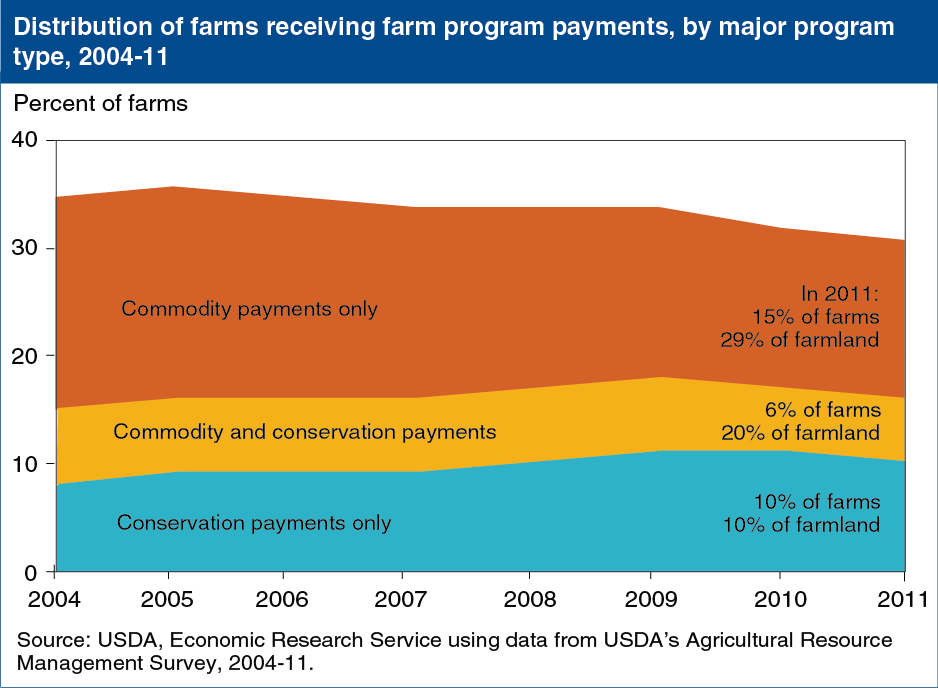Relatively few farms receive both conservation and commodity payments
- by Economic Research Service
- 4/22/2013

Existing conservation and farm commodity programs serve multiple purposes. Commodity-based income programs are intended to support farm families historically involved in the production of targeted “program” crops. Conservation payments, on the other hand, are designed to promote environmentally beneficial changes in farmland use or production practices. Conservation payments are available to a much wider range of producers, with nearly all crop and livestock producers eligible for at least one conservation program. In 2011, roughly 31 percent of all U.S. farms received commodity payments, conservation payments, or both. Only 6 percent of farms, however, received both commodity and conservation payments. Fifty-five percent of conservation payments went to farms that did not receive commodity payments, while 63 percent of commodity payments went to farms that did not receive conservation payments. Since 2004, the proportion of farms receiving both conservation and commodity payments has remained fairly constant. This chart updates one found in the March 2012 Amber Waves finding, Green Payments: Can Conservation and Commodity Programs Be Combined?

